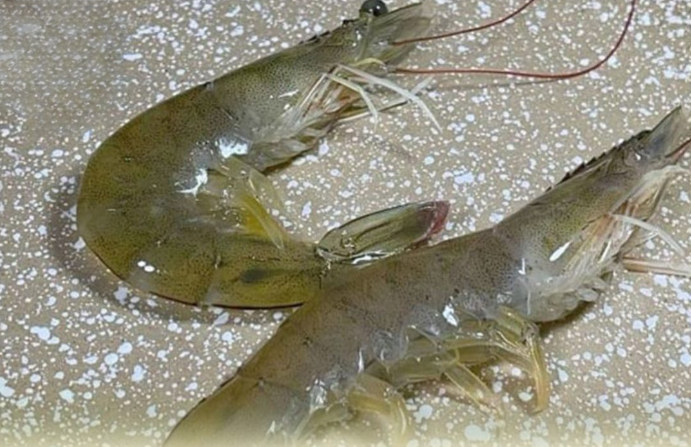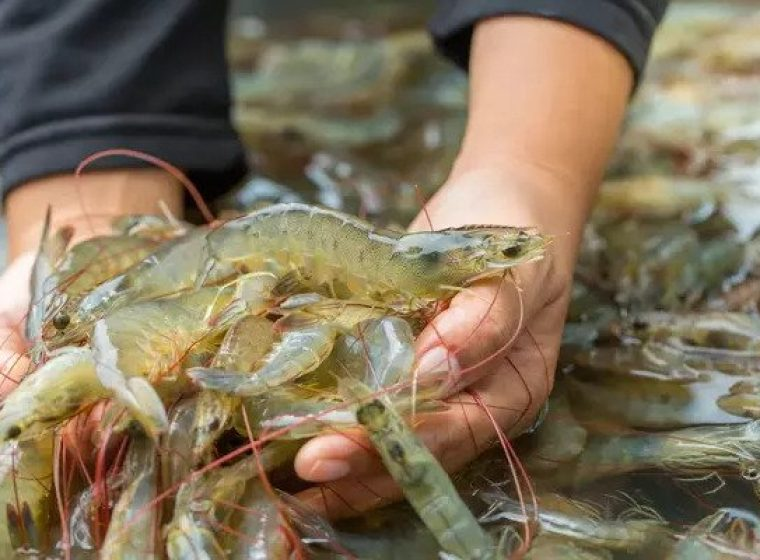When it comes to buying shrimp, many of us may not know whether to select “straight shrimp” or “curved shrimp.” While the difference might seem trivial, it’s actually significant and can affect the taste, texture, and overall quality of your meal. In this article, we’ll break down the differences between straight and curved shrimp, what to look for, and how to ensure you’re getting the freshest catch.

Why Does the Shape of Shrimp Matter?
If you’ve ever wondered why some shrimp are straight while others are curved, you’re not alone. The difference in shape is not just aesthetic—it can reveal a lot about the shrimp’s quality and freshness.
- Straight Shrimp: Generally, straight shrimp have likely been dead for a while. Once shrimp die, their muscles become loose, causing them to lose their natural curvature. These shrimp often come from the freezer, which can result in a fishy odor and inferior meat quality.
- Curved Shrimp: Curved shrimp, on the other hand, are typically fresher. Live shrimp naturally maintain a curved shape, even when chilled or freshly processed. When exposed to cold temperatures, their muscles tighten, preserving the curve. This is why curved shrimp are a safer bet for freshness and flavor.
What Makes Curved Shrimp the Better Choice?
Curved shrimp are often the go-to option for seafood lovers and chefs alike. Here’s why:
1. Fresher Meat with Better Texture
The natural curve in shrimp indicates that the muscles are still firm and intact. This results in meat that is juicy, tender, and flavorful after cooking. In contrast, straight shrimp may have lost some of their original texture, leading to a mushy or rubbery bite.
2. Less Fishy Smell
Shrimp that lose their natural curve are more likely to have been frozen for an extended period. This can result in a stronger, fishy smell that’s hard to mask even during cooking. Fresh, curved shrimp, however, generally have a mild aroma, indicating better quality.
3. Enhanced Flavor
Freshness plays a significant role in the flavor of shrimp. Curved shrimp, which are likely caught or processed more recently, retain their natural sweetness. When cooked, they offer a cleaner and more pleasant taste, making them ideal for various shrimp dishes.
How to Identify Fresh Shrimp at the Market
While selecting curved shrimp is a good starting point, there are additional factors to consider when picking the freshest shrimp at the market. Here’s a quick guide to help you make the best choice:
1. Watch Out for Missing Heads and Tails
- What It Means: Shrimp that are missing heads or tails are often a sign of aging or improper handling. When shrimp start to spoil, the heads can rot first, becoming mushy and detaching from the body.
- Why to Avoid Them: These shrimp tend to have a stronger, unpleasant taste after cooking, and the meat won’t be as firm or flavorful as that of freshly caught shrimp.
2. Avoid Shrimp with Red Shells
- What It Means: Red shells on raw shrimp can indicate exposure to high temperatures during transportation, which causes discoloration and degrades quality.
- Why to Avoid Them: Shrimp with red shells often have a drier, less flavorful meat. Opt for shrimp with clean, translucent shells instead, as they are more likely to be fresh.
3. Check the Meat’s Firmness
- What It Means: If the shrimp meat feels overly soft or mushy to the touch, it may be a sign of spoilage.
- Why to Avoid Them: Overly soft shrimp often indicate that the tails have begun to rot. These shrimp will produce a stronger fishy smell and taste when cooked, making them less appealing.
The Best Way to Cook Fresh Shrimp

Even the freshest shrimp require proper cooking techniques to maintain their flavor and texture. Here are some tips to get the most out of your shrimp:
1. Use Boiling Water for Cooking
Boiling shrimp in water ensures that they cook evenly. For added flavor, consider adding Sichuan peppercorns, ginger, and a splash of beer to the boiling water. These ingredients help eliminate any lingering fishy smell and enhance the natural taste of the shrimp.
2. Don’t Overcook Shrimp
Overcooking is one of the most common mistakes when preparing shrimp. To keep the meat tender and juicy, remove the shrimp from heat as soon as they turn pink and opaque. Cooking for too long can make the meat tough and rubbery.
3. Consume Shrimp on the Same Day
Shrimp are best enjoyed fresh. To preserve their natural flavor, try to consume them on the same day they are cooked. If you must store them, do so in an airtight container in the refrigerator and use them within 24 hours to maintain their freshness.
The Takeaway: Always Choose Curved Shrimp
When it comes to buying shrimp, curved shrimp should always be your first choice. They are more likely to be fresh, flavorful, and have a better texture. Whether you’re grilling, boiling, or frying them, starting with high-quality shrimp is key to a delicious meal.
Remember, curved shrimp are typically a sign of recent catch or processing, while straight shrimp often suggest that the shrimp have been dead for some time, potentially leading to less-than-ideal taste and texture.
Conclusion
Selecting the best shrimp at the market doesn’t have to be complicated. By prioritizing curved shrimp and keeping an eye out for other signs of freshness, you can ensure a tastier and healthier meal. Don’t forget to incorporate the right cooking techniques to maximize the natural flavors of the shrimp. So next time you head to the market, remember this simple rule: choose curved shrimp for the freshest, most satisfying experience!


